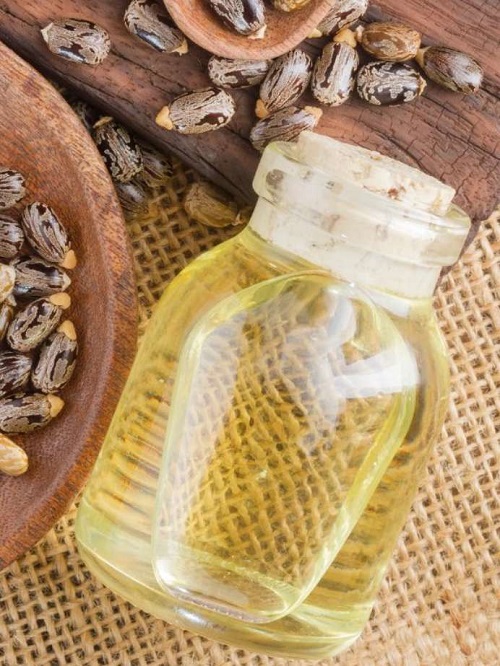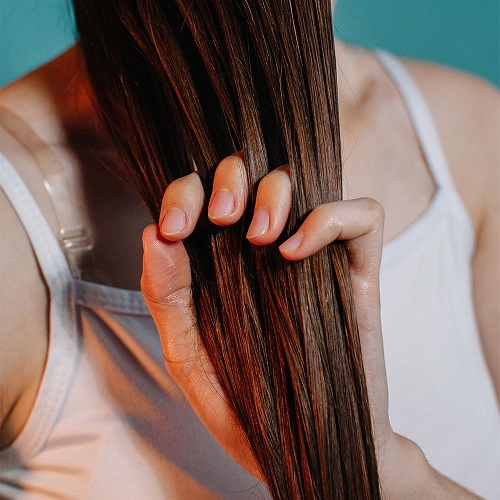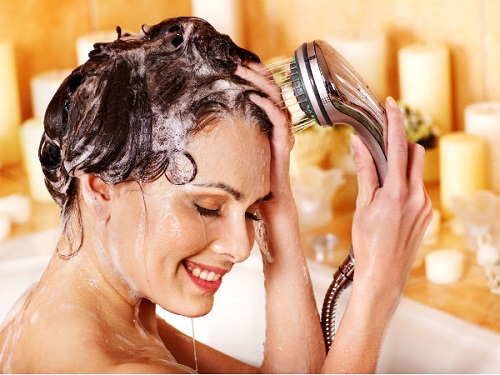Get a step-by-step guide on ‘How To Get Castor Oil Out Of Hair?‘, ensuring that your locks feel clean, soft, and manageable!

Castor oil, a natural elixir celebrated for its numerous benefits, is a popular choice for hair care. Whether you’ve used it for deep conditioning, hair growth, or addressing scalp issues, one concern often arises—How To Get Castor Oil Out Of Hair? Let’s explore the remedies below!
Here are the Best Natural Products to Replace Castor Oil
Why is Getting Castor Oil Out of Hair Important?
Before we delve into the nitty-gritty of removal, let’s grasp the importance of the task at hand. Castor oil is thick and tenacious, adhering to your hair and scalp with determination. If not removed correctly, it can lead to hair feeling greasy and weighed down, and even cause potential clogging of hair follicles. Therefore, understanding how to how to wash castor oil out of hair is vital for maintaining the health and vibrancy of your strands.
Learn about the Benefits of Castor Oil for Eyelashes here
How To Get Castor Oil Out Of Hair?
To ensure you have a comprehensive understanding of the process, we present you with a descriptive step-by-step guide on getting castor oil out of hair:
Step 1: Gather Your Supplies
Begin by assembling your necessary supplies. These include a gentle, sulfate-free shampoo, a quality conditioner, a wide-tooth comb, a clean and soft towel, and a comfortable shower cap.
Step 2: Pre-Shampoo Detangling
Before wetting your hair, use the wide-tooth comb to carefully detangle it. This step minimizes the risk of worsening knots when your hair gets wet.
Step 3: Pre-Wash Massage
Take a small amount of your chosen conditioner and gently massage it into your hair, focusing especially on the areas where castor oil is dense. This step serves to break down the oil and prepare your hair for shampooing.
Step 4: Rinse with Lukewarm Water
Thoroughly saturate your hair with lukewarm water. The warmth plays a role in melting the castor oil patches, making it more amenable to removal.
Step 5: Double Shampooing
Apply your sulfate-free shampoo and work it into your hair and scalp. Rinse and repeat. The second shampooing guarantees the complete removal of oil and averts any residual buildup.
Step 6: Condition and Detangle
With conditioner, focus on the lengths of your hair, avoiding the scalp. Let it sit for a few minutes to restore moisture. While the conditioner is in, employ the wide-tooth comb to gently detangle your hair.
Step 7: Final Rinse
Rinse your hair meticulously with cool water. The cool water helps seal the hair cuticles and adds a brilliant shine to your tresses.
Step 8: Towel Dry
Gently pat your hair with a clean towel to eliminate excess water. Avoid vigorous rubbing to prevent frizz.
Step 9: Air or Blow Dry
Allow your hair to air dry naturally, or if you opt for a blow dryer, use the lowest heat setting. Don’t forget to apply a heat protectant if you choose the latter.
With your castor oil-free hair, style it as you desire. Your hair is now clean, healthy, and ready to dazzle the world.
Learn about Using Castor Oil for Killing Lice here
DIYs to Remove Castor Oil from Hair
If you still feel greasiness in your hair, here are some super effective DIY that will make sure it gets off your beautiful strands:
1. Egg Wash
Egg yolks contain lecithin, which is a natural emulsifying agent. When you apply an egg wash to your hair, the lecithin helps break down the castor oil, making it easier to wash out.
How to Do?
- Beat one egg and mix it with a cup of water.
- Apply the mixture to your hair, massaging it in thoroughly.
- Leave it on for 5-10 minutes.
- Rinse your hair with cool water and then proceed to shampoo as usual.
Considerations:
Egg wash can leave a smell, so it’s essential to shampoo your hair well afterward. Also, be cautious of the water temperature; hot water might solidify the egg, making it difficult to remove from your hair.
2. Baking Soda Paste
Baking soda is a natural cleanser and oil-absorbing agent. It can help to break down and absorb the castor oil from your hair.
How to Do?
- Mix 2-3 tablespoons of baking soda with enough water to make a paste.
- Apply the paste to your hair, focusing on areas where the oil is concentrated.
- Leave it on for 5-10 minutes.
- Rinse thoroughly and shampoo your hair as usual.
Considerations:
Baking soda can be drying to the hair, so make sure to follow up with a conditioner to restore moisture.
3. Apple Cider Vinegar Rinse
Apple cider vinegar is acidic and can help to break down oils and residues in your hair. Additionally, it helps in balancing the pH levels of your scalp.
How to Do?
- Dilute one part apple cider vinegar with three parts water.
- After shampooing, pour the mixture over your hair.
- Leave it in for 2-3 minutes.
- Rinse thoroughly with cool water.
Considerations:
ACV has a strong smell that dissipates as it dries. Still, you might want to shampoo your hair afterward to neutralize the odor.
4. Cornstarch or Dry Shampoo
Both cornstarch and dry shampoo work by absorbing excess oils from your hair, thereby making the castor oil easier to wash out.
How to Do?
- Apply a generous amount of cornstarch or dry shampoo to your hair.
- Let it sit for 10-15 minutes to absorb the oil.
- Brush your hair thoroughly to remove the powder and the absorbed oil.
- Shampoo as usual.
Considerations:
These methods are generally quick fixes and may not remove all the castor oil. A follow-up wash may be necessary.
5. Aloe Vera Gel
Aloe vera has natural cleansing and hydrating properties. It can help break down oils while maintaining your hair’s natural moisture.
How to Do?
- Mix aloe vera gel with your regular shampoo.
- Apply the mixture to your hair and scalp.
- Massage it in for a few minutes.
- Rinse and shampoo again if needed.
Considerations:
Aloe vera is generally mild and can be a great option for sensitive scalps. However, if you’re allergic to aloe vera, this method isn’t for you. Always do a patch test first.
Learn about Using Castor Oil on Baby Hair here
Conclusion
Removing castor oil from your hair is a task that can be tackled with ease and finesse. By following the detailed steps outlined in this guide, you ensure that your hair is not only free from castor oil residue but also in the best condition it can be. Say hello to healthy, lustrous, and beautifully clean hair that’s ready to shine in all its glory.
Is Castor Oil Good for Frizzy Hair? Learn here
FAQs
1. Is There A Specific Type Of Shampoo That Works Best For Removing Castor Oil From Hair?
The most effective shampoos for removing castor oil are sulfate-free and formulated for deep cleansing. These shampoos help break down and remove the oil without over-drying your hair. Look for a gentle sulfate-free shampoo to ensure the best results.
2. Can I Use Any Conditioner After Shampooing To Restore Moisture To My Hair?
While you can use your preferred conditioner, it’s essential to apply it mainly to the lengths of your hair, avoiding the scalp. Conditioner on the scalp can potentially lead to an oily feel. Also, using a conditioner that complements your hair type and concerns can be more beneficial.
3. How Often Should I Follow This Castor Oil Removal Process, Especially If I Use Castor Oil Frequently For Hair Treatments?
The frequency of this process depends on how often you use castor oil in your hair care routine. If you use castor oil regularly, it’s recommended to follow this removal process after each treatment to prevent oil buildup.
If you use castor oil occasionally, you can follow as needed, typically when you feel your hair is starting to feel heavy or greasy.



